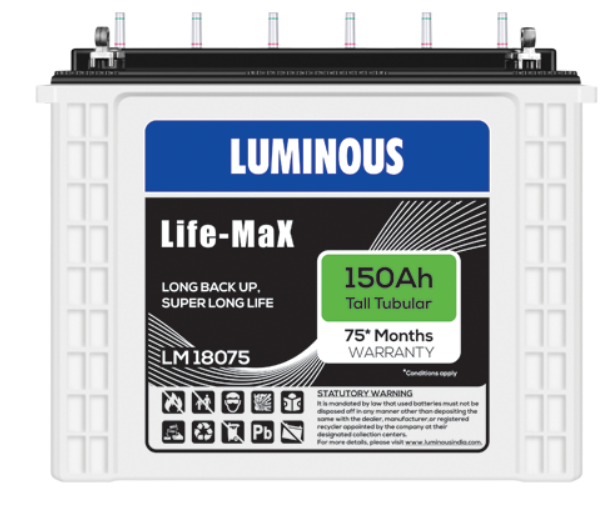Choose the best battery for inverter can seem like a daunting task because of the multiple technologies and options available in the market today. Moreover, for a layperson with no idea about inverter batteries, it’s even more difficult to pick one that’s right for their needs and requirements. So, in this guide, we are going to look at tubular, flat-plate, and GEL batteries, all being equally popular options among consumers across the country.
Although all three batteries have the same primary purpose, we will look at a few of the aspects that make tubular, flat-plate, and GEL batteries vary from each other. So, let’s get started!
Image Courtesy: Luminous
- Design and Purpose
A tubular battery has a very complex design compared to a flat plate battery, and they both serve different purposes. Tubular batteries are outstanding for areas with long power cuts, while flat plate batteries are great for areas with short and frequent electricity cuts. On the other hand, GEL batteries are excellent at providing consistent power backup for extended periods.
- Service Life
The service lives of a tubular and flat plate battery are vastly different. While the former has a service life of around 3 to 5 years, and the latter has a service life of a maximum of 3 years, giving the tubular battery an edge over a flat-plate battery. However, an inverter battery with GEL technology can last up to 6 years if you follow proper care and maintenance.
- Water Use
Batteries require water topping up from time to time, some more than others. A tubular battery requires very less water top-up compared to flat plate batteries as they require frequent water top-ups. But even better, GEL inverter batteries require zero water topping-up and are virtually maintenance-free, so there’s hardly any hassle. So, if you are looking for a battery that requires very little in terms of maintenance, then a GEL battery fits the bill perfectly.
- Pricing
Tubular batteries are more expensive compared to flat plate batteries, making flat plate batteries more affordable for smaller homes with fewer appliances to run. A tubular battery, even though it costs more, is designed to handle heavy-load equipment for longer durations –making it more suitable for bigger homes or offices. As far as GEL batteries are concerned, they cost almost the same as tubular batteries, but it ultimately depends on the build quality, features, and brand.
- Charging Time
Even though a tubular battery’s charging time is comparatively highercompared to the charging time of both flat-plate batteries and GEL batteries, it is highly efficient for providing longer backup power. . So, you need to choose an inverter battery technology based on how long and frequent the power cuts are in your area.
In short, a tubular battery is much better compared to flat plate and GEL batteries if you are looking for more power, life, capacity, and less maintenance. Moreover, their incredible ability to handle high temperatures makes them more reliable and durable.
So, if you are looking for a battery that lasts longer and costs less in terms of maintenance while being able to handle all of the heavy-load appliances, then a tubular battery is the best battery for inverter you can invest in. However, if you are looking for something more affordable and don’t have a big house with multiple heavy-duty appliances, then a GEL battery would be good enough.
Luminous has a wide range of tubular and flat plate batteries across a range of budgets to choose from, so if you are in the market looking for the best battery for inverter, then do check out their impressive lineup of tubular and flat plate batteries right away!






